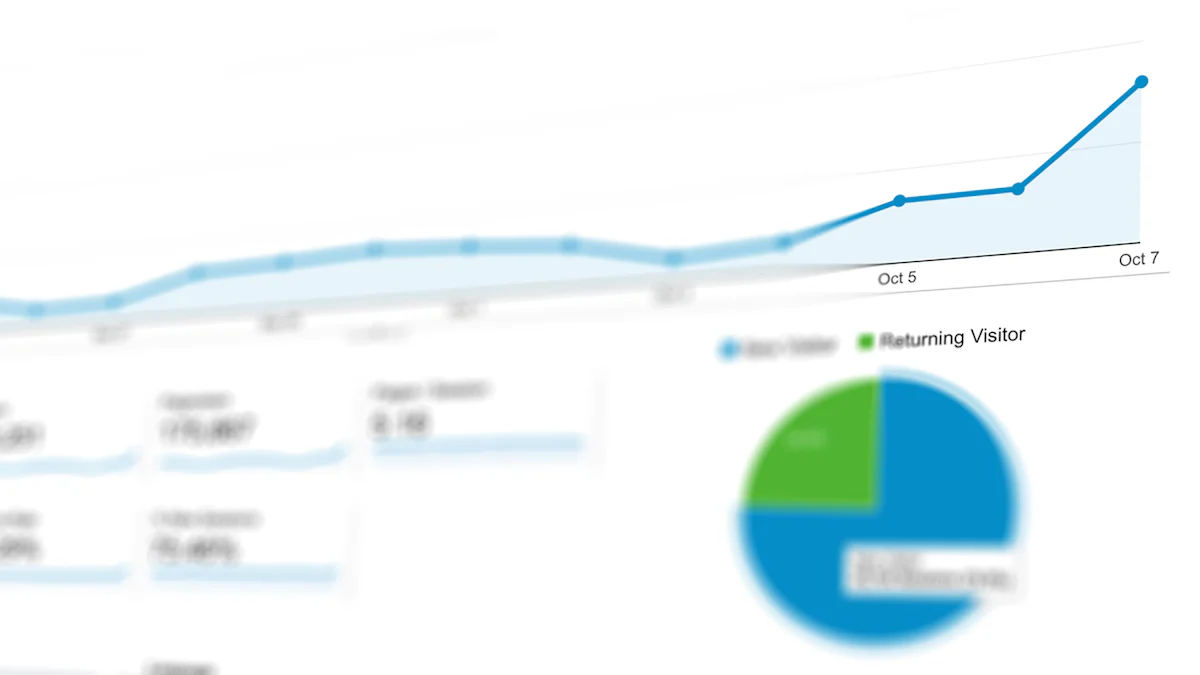5 Simple Steps to Measure Influencer Marketing ROI

Influencer marketing has become one of the most effective strategies for driving measurable results. Studies reveal that 82% of marketers believe it generates the best-quality leads, while 83% of brands still find it effective. On average, businesses earn $6.50 for every dollar spent, with some achieving up to $18 in earned media value. These numbers highlight why understanding how to measure ROI of influencer marketing is crucial for success.
However, measuring influencer marketing ROI comes with challenges. For example, tracking costs and assigning value to non-monetary outcomes like brand awareness can be tricky. By using the right strategies, you can overcome these obstacles and optimize your campaigns for better results.
| Statistic | Value |
|---|---|
| Marketers who think influencer marketing generates the best-quality leads | 82% |
| Brands that say influencer marketing is still effective | 83% |
| Average return on investment for businesses per dollar spent | $6.50 |
| Earned media value for every dollar spent on influencer marketing | Up to $18 |
Start applying proven marketing strategies today to unlock the full potential of influencer marketing and achieve a higher ROI.
Define Clear Campaign Goals
Setting clear campaign goals is the foundation of successful influencer marketing. Without defined objectives, you risk running campaigns that fail to deliver measurable results. By aligning your goals with business objectives and setting measurable KPIs, you can ensure your influencer marketing efforts drive meaningful outcomes.
Align Goals with Business Objectives
Your campaign goals should directly support your broader business objectives. For example, if your business aims to increase revenue, your influencer marketing campaign might focus on driving conversions or boosting sales. To align your goals effectively:
- Involve stakeholders from finance, sales, and leadership to ensure your strategy matches business priorities.
- Use real-time dashboards to track performance metrics and provide transparency to all stakeholders.
- Adapt your campaign objectives based on market trends and competitor analysis.
- Set up clear revenue tracking systems and secondary goals, such as lead generation or brand awareness.
By aligning your influencer marketing goals with your business objectives, you create a roadmap that ensures every campaign contributes to your company’s success.
Set Measurable KPIs
Defining measurable KPIs is essential for influencer marketing measurement. KPIs act as benchmarks, helping you track progress and evaluate success. Without them, you cannot accurately measure ROI or identify areas for improvement.
Examples of KPIs for Influencer Marketing
Here are some commonly used KPIs for influencer marketing:
| KPI | Description |
|---|---|
| Reach and Impressions | Metrics that indicate how many people have seen the content, essential for measuring visibility. |
| Earned Media Value | Assigns a monetary value to the organic reach gained through influencer campaigns. |
| Engagement | Measures interactions (likes, comments, shares) with the content, indicating audience interest. |
| Conversions | Tracks the number of sales or actions taken as a result of the campaign. |
| Brand Sentiment | Assesses public perception and feelings towards the brand before and after the campaign. |
These KPIs provide a comprehensive view of your campaign’s performance, from visibility to audience engagement and conversions.
Why KPIs Are Crucial for ROI Measurement
KPIs are the backbone of influencer marketing measurement. They allow you to quantify success and identify what works. For instance, tracking engagement metrics like likes and shares helps you understand how well your content resonates with the audience. Monitoring conversions shows whether your campaign drives tangible results, such as sales or sign-ups.
Failing to define KPIs can lead to ineffective campaigns. Without clear metrics, you cannot measure success or optimize future efforts. By setting measurable KPIs, you ensure your influencer marketing campaigns remain focused and results-driven.
Choose the Right Metrics to Track
Tracking the right metrics is essential for evaluating the success of your influencer marketing campaigns. By focusing on engagement, conversions, and brand awareness, you can gain a comprehensive understanding of your campaign’s performance.
Engagement Metrics
Likes, Comments, and Shares
Engagement metrics measure how users interact with your content. These include likes, comments, and shares, which indicate how well your audience connects with the influencer’s message. To track these effectively:
- Understand your social media engagement metrics to evaluate your strategy.
- Use tools like Hootsuite or Sprout Social to monitor likes, comments, and shares.
- Calculate engagement rates using the formula: Engagement Rate = (Total Engagements / Total Followers) x 100.
- Post consistently and create high-quality, engaging content to maintain audience interest.
Nano influencers often achieve higher engagement rates. For example, they average 6% on Instagram, outperforming larger influencers.
Tracking Click-Through Rates (CTR)
CTR measures how many users click on a link in the influencer’s content. This metric helps you assess how effectively the content drives traffic to your website. Use UTM parameters to track clicks and analyze performance through Google Analytics.
Conversion Metrics
Sales and Revenue Attribution
Conversion metrics focus on specific actions, such as purchases or sign-ups. To attribute sales accurately to influencer marketing:
- Use unique tracking links or promo codes to measure sales.
- Implement affiliate links to track traffic and revenue generated by influencers.
- Leverage tools like Google Analytics to monitor referral traffic and conversions.
Setting clear objectives and measuring KPIs like conversions ensures your campaigns align with business goals.
Tracking Leads and Sign-Ups
Leads and sign-ups are critical for understanding how influencer campaigns contribute to your sales funnel. Use tracking links and forms to capture data on new leads. Compare pre- and post-campaign results to measure success.
Brand Awareness Metrics
Reach and Impressions
Brand awareness metrics measure how many people see your content. Reach refers to the number of unique viewers, while impressions count total views. Tools like Instagram Insights and GRIN provide detailed analytics on reach and impressions.
Sentiment Analysis
Sentiment analysis evaluates public perception of your brand. Conduct surveys or brand recall studies to understand how influencer campaigns impact your audience’s feelings. Platforms like Emplifi and Tagger offer insights into audience sentiment and campaign effectiveness.
By tracking these metrics, you can measure influencer marketing success and make data-driven decisions to optimize future campaigns.
Use Tools to Measure Influencer Marketing ROI

Using the right tools can simplify the process of measuring influencer marketing ROI. These tools help you track influencer campaign performance, analyze data, and make informed decisions to improve results.
Implement UTM Parameters
How UTMs Help Track Campaign Performance
UTM parameters are essential for tracking influencer marketing campaigns. These small snippets of text added to URLs allow you to monitor traffic sources and campaign performance accurately. Here’s how UTMs benefit your campaigns:
- Provide accurate tracking of influencer campaign performance.
- Enable data-driven decisions for your influencer marketing strategy.
- Offer transparency into campaign and influencer effectiveness.
- Facilitate ROI measurement for influencer marketing campaigns.
- Deliver insights into customer behavior and campaign resonance.
By using UTMs, you gain a clearer picture of how each influencer contributes to your goals.
Best Practices for Using UTMs
To maximize the effectiveness of UTMs:
- Use consistent naming conventions for campaign tags.
- Create unique UTM links for each influencer campaign.
- Test UTM links before sharing them with influencers.
- Monitor UTM data regularly to identify trends and optimize campaigns.
These practices ensure you collect reliable data and improve your influencer marketing efforts.
Leverage Analytics Platforms
Google Analytics for Influencer Campaigns
Google Analytics is a powerful tool for tracking influencer marketing campaigns. It helps you measure referral traffic, conversions, and user behavior. Key benefits include:
- Improved ROI measurement.
- Accurate evaluation of campaign performance.
- Real-time optimization of influencer campaigns.
- Deeper insights into audience behavior.
By integrating Google Analytics with UTM parameters, you can trace the impact of each influencer on your website traffic and sales.
Social Media Insights and Tools
Social media platforms like Instagram and YouTube offer built-in analytics tools. These tools provide data on engagement, reach, and audience demographics. For example, Instagram Insights shows how many users interacted with influencer content, while YouTube Analytics tracks video performance.
Using these tools helps you evaluate campaign performance and refine your influencer marketing strategy.
Explore Influencer Marketing Platforms
Features to Look for in a Platform
When selecting an influencer marketing platform, prioritize these features:
- A user-friendly interface for efficient campaign management.
- A large influencer database to find the right match for your brand.
- Advanced analytics tools for tracking campaign performance.
- Search filters to identify influencers based on specific criteria.
- Responsive customer support for troubleshooting.
- Adaptability to evolving influencer marketing trends.
These features ensure you can manage influencer campaigns effectively and achieve better results.
Examples of Popular Tools
Several platforms simplify influencer marketing campaigns:
- Sprout Social: Combines influencer analysis with campaign management.
- Aspire: Offers ROI tracking and streamlined campaign management.
- Upfluence: Provides tools for influencer discovery and performance measurement.
- Grin: Tracks influencer partnerships and includes gifting and payment features.
- Tagger: Delivers insights into audience demographics and campaign effectiveness.
These tools help you manage influencer campaigns and measure ROI with ease.
Calculate Influencer Marketing ROI
Understand the ROI Formula
ROI = (Revenue - Cost) / Cost
To calculate influencer marketing ROI, you can use a simple formula: (Revenue - Cost) / Cost x 100. This formula helps you determine the percentage return on investment. For example:
- Calculate the revenue generated from your influencer campaign.
- Subtract the total cost of the campaign from the revenue.
- Divide the result by the campaign cost and multiply by 100 to get the ROI percentage.
This method provides a clear picture of how much value your campaign delivers compared to its cost.
Adjusting the Formula for Non-Monetary Goals
Not all campaigns focus solely on revenue. Some aim to boost brand awareness or engagement. In these cases, adjust the formula by assigning a monetary value to non-monetary outcomes. For instance, you can estimate the value of increased website traffic or social media followers. This approach ensures you capture the full impact of your influencer marketing efforts.
Assign Value to Non-Monetary Outcomes
Valuing Brand Awareness
Brand awareness plays a critical role in long-term growth. To assign value to awareness, consider metrics like reach, impressions, and audience growth. Tools like Google Analytics or social media insights can help you estimate the monetary worth of increased visibility. For example, calculate the cost of achieving similar reach through paid advertising and use that as a benchmark.
Estimating the Impact of Engagement
Engagement metrics, such as likes, comments, and shares, reflect how well your audience connects with your content. To estimate their value, analyze how engagement drives actions like website visits or sign-ups. You can also compare engagement rates across campaigns to identify trends and refine your strategy.
Compare ROI Across Campaigns
Benchmarking Against Industry Standards
Benchmarking helps you evaluate your performance relative to competitors. Use metrics like engagement rates, conversions, and audience growth to compare your campaigns. Implement tools like UTM links and promo codes to track sales and measure effectiveness. Surveys and brand tracking tools can also provide insights into long-term impacts.
Identifying High-Performing Campaigns
To identify successful campaigns, focus on key factors like audience demographics, content quality, and influencer credibility. High-performing campaigns often feature influencers whose followers align with your target audience. Authenticity and niche expertise also play a significant role in driving conversions. By analyzing these elements, you can replicate success in future campaigns.
Optimize Campaigns for Better ROI

Analyze What Worked and What Didn’t
Reviewing Influencer Performance
To improve your influencer marketing strategy, start by analyzing past campaigns. Focus on key metrics to evaluate influencer performance:
- Engagement rate shows how well the audience interacted with the content.
- Audience growth trends reveal how many followers the influencer gained during the campaign.
- Content quality and relevance indicate how well the influencer’s posts aligned with your brand.
- Campaign performance metrics, such as conversion rates and ROI, highlight the financial impact.
By reviewing these factors, you can identify which influencers delivered the best results and refine your future influencer partnerships.
Identifying Content That Resonates
Content that resonates with your audience drives better engagement and conversions. To identify such content:
- Choose influencers whose audience matches your target demographic.
- Co-create authentic content that reflects your brand values.
- Experiment with different formats like videos, blog posts, or social media stories.
- Measure success using KPIs like engagement rates, website traffic, and conversions.
Analyzing past campaigns helps you understand what works and ensures your influencer marketing efforts remain effective.
Test and Iterate
A/B Testing for Influencer Campaigns
A/B testing allows you to compare two versions of a campaign to see which performs better. Follow these steps:
- Select one variable to test, such as content format or call-to-action.
- Set clear, measurable goals for the test.
- Create two campaign versions with the chosen variable.
- Divide your audience evenly between the two versions.
- Use tracking tools to monitor performance.
This method helps you optimize your influencer marketing strategy by identifying what resonates most with your audience.
Experimenting with Different Content Formats
Experimenting with content formats keeps your campaigns fresh and engaging. Collaborate with influencers to create content that appeals to their audience. Use analytics tools to track website traffic and conversions from each format. Testing different approaches ensures your campaigns stay relevant and effective.
Build Long-Term Relationships with Influencers
Benefits of Long-Term Partnerships
Long-term influencer partnerships offer several advantages:
- Authentic endorsements build trust and credibility.
- Consistent messaging strengthens your brand identity.
- Cost-efficiency improves through better-negotiated deals.
- Deeper relationships lead to higher-quality content.
- Ongoing exposure keeps your brand top-of-mind for consumers.
A report shows that 79% of influencers prefer long-term collaborations, making it a win-win for both parties.
How to Nurture Influencer Relationships
To nurture strong influencer partnerships:
- Use multiple communication channels like WhatsApp or Instagram Direct Messages to build genuine connections.
- Host feedback sessions to show influencers that their opinions matter.
- Continue engaging with influencers even after campaigns end to maintain the relationship.
Treat influencers as partners, not just collaborators. This approach fosters loyalty and ensures long-term success for your influencer marketing strategy.
Measuring influencer marketing ROI becomes simple when you follow these five steps. Start by defining clear goals that align with your business objectives. Track the right metrics to evaluate performance. Use tools like UTM parameters and analytics platforms to measure results accurately. Calculate ROI to understand the value of your campaigns. Optimize your strategy by analyzing past performance and building long-term relationships with influencers. These steps help you make data-driven decisions and achieve influencer marketing success. Begin implementing these strategies today to maximize your ROI and grow your brand effectively.
FAQ
What is the best way to track influencer marketing ROI?
Use tools like UTM parameters and Google Analytics to track campaign performance. These tools help you monitor traffic, conversions, and engagement. Combine this data with your KPIs to calculate ROI accurately. Always assign value to both monetary and non-monetary outcomes for a complete analysis.
How do you measure non-monetary outcomes like brand awareness?
Track metrics such as reach, impressions, and sentiment analysis. Use tools like Instagram Insights or Emplifi to gather data. Assign a monetary value by comparing these metrics to the cost of achieving similar results through paid advertising. This approach ensures you capture the full impact.
How can you ensure accurate ROI calculations?
Use unique tracking links, promo codes, or affiliate links for each influencer. These methods help you attribute sales and traffic directly to specific campaigns. Regularly review your data to identify discrepancies and refine your tracking methods for better accuracy.
What tools are essential for measuring influencer marketing success?
You need tools like Google Analytics, Sprout Social, and influencer marketing platforms like Aspire or Grin. These tools provide insights into engagement, conversions, and audience demographics. They also simplify campaign management and help you make data-driven decisions.
Why is it important to set KPIs for influencer campaigns?
KPIs give you measurable benchmarks to track progress and evaluate success. Without KPIs, you cannot determine if your campaign meets its goals. Metrics like engagement, conversions, and reach help you understand what works and guide future strategies for better results.
See Also
Simplifying Influencer Marketing ROI Measurement for 2025
Essential Metrics for Evaluating Influencer Marketing ROI 2025
Effective Strategies to Enhance Influencer Marketing ROI 2025
Best Practices for Boosting Influencer Marketing ROI 2025
Winning Approaches to Increase Influencer Marketing ROI 2025
